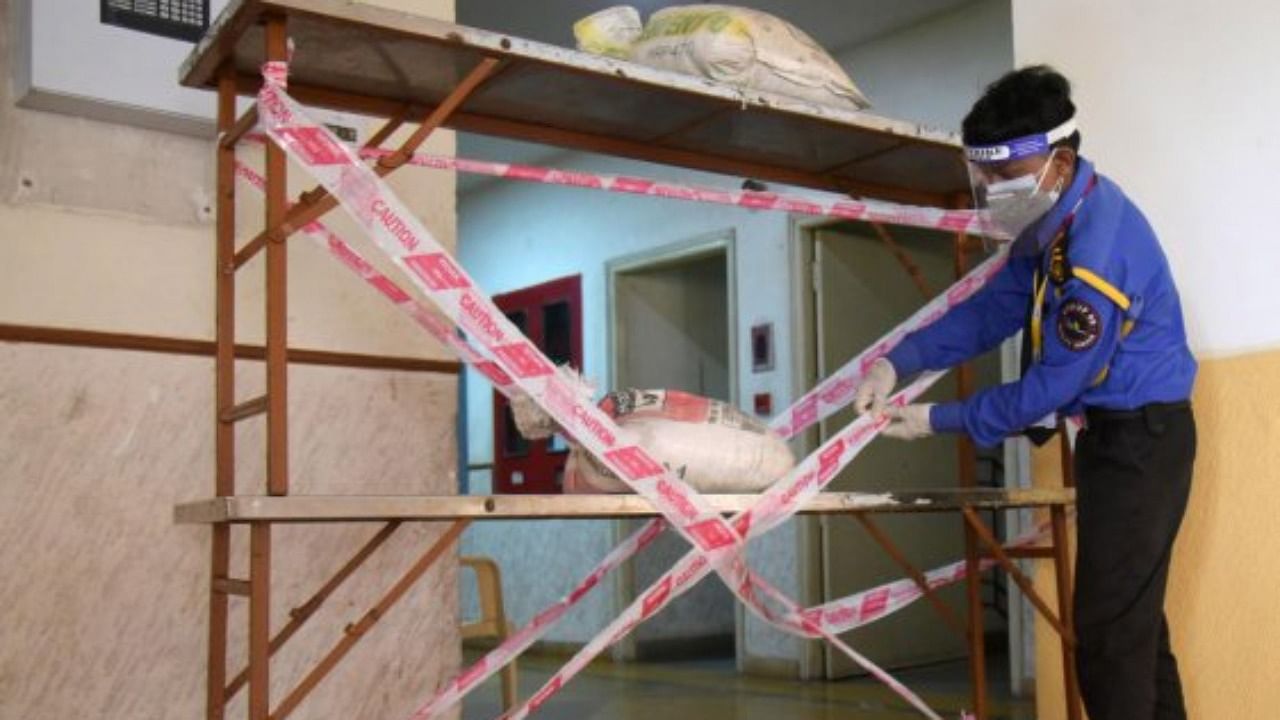
A Covid-19 outbreak at an apartment complex in Bengaluru appears to suggest the potential airborne transmission of the novel coronavirus.
Since the first case was identified at the Renaissance Temple Bells apartment complex in Mahalakshmi Layout on July 24, some 20 additional positive cases have been found, including three children below the age of 18. All the adults had received at least one dose of the vaccine and most cases are either asymptomatic or have mild fever and cold.
However, what has baffled residents of this five-tower complex is a virus behaviour contrary to expectations. For one, the outbreaks have occurred only in apartment units directly one above the other.
“All of the cases are in series in A Block,” explained Pavan Chandrashekar, vice-president of the apartment RWA and in charge of Covid containment.
“The first cases happened in an apartment on the sixth floor. The next cases were in apartments stacked one above the next. Over the last eight days, the total number of cases has reached 21, of which 14 were identified since July 29,” Chandrashekar said.
Three units in the section had not been affected while one unit is currently vacant.
Chandrashekar added that the infections had happened even though all common areas are regularly sanitised.
When Bruhat Bengaluru Mahanagara Palike (BBMP) health officials investigated, they discovered that the affected apartments shared a common ventilation duct connected to bathrooms and coupled to exhaust fans. Chandrashekar stressed that no other people living in apartment units unconnected to the duct have been infected.
Shivaswamy N, Joint Commissioner, West Zone, confirmed that all positive cases so far are confined to Tower A.
“We tested about 300 residents of Tower B yesterday. None are positive. In the interim, we have closed all common areas and the clubhouse. The samples of Tower C residents were collected today for testing,” he said.
The BBMP has instructed residents to turn off the exhaust fans and to flush their toilets with lids closed in future to prevent aerosolisation, as the virus has previously been shown to exist in faeces.
Additional professor Pradeep Badanur, Department of Epidemiology, Nimhans, pointed out that it may be difficult to prove airborne transmission of the virus unless air sampling is done in the apartments.
Dr Basavaraj Kuntoji, an internal medicine specialist at Manipal Hospital (Malleswaram), also stressed that proving airborne transmission may be difficult.
“However, previous studies have shown that when droplets of the virus are less than five microns in size, they can spread beyond six feet,” he said.
Lab evidence
In a Lancet article published in April, scientists pointed to lab evidence which showed that the Sars-CoV-2 virus stayed infectious in the air for up to three hours.
In addition, the virus has been found in air filters and building ducts in hospitals with Covid patients.
These locations could be reached only by aerosol.